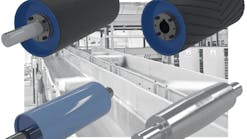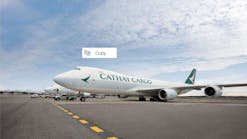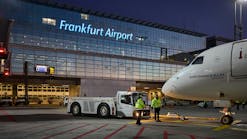Fuller flights are making it hard for American Airlines employees to get in and out of Tulsa. One of the perks about working for an airline is standby travel privileges.
But, with airline passenger traffic increasing while airlines are reducing their fleets and flying more regional jets, there are fewer seats available for non-revenue passengers, industry officials say.
American Airlines, with 7,000 employees in Tulsa, reported a 2006 load factor -- the percentage of seats filled -- of 80.1 percent, 1.6 points higher than 2005.
"Obviously, with the concentration of employees in Tulsa, it makes it difficult to fly on a standby basis," said American spokesman Tim Smith. "Many Tulsa-area employees sometimes will purchase a confirmed-seat ticket for a portion of their journey -- for instance DFW or Chicago -- where they will have a better chance of finding standby seats."
Steve Harmening, an American Airlines mechanic at the Tulsa Maintenance & Engineering Center, said he travels as much standby as anyone.
"But higher load factors are making it harder to get on a plane anywhere," Harmening said. "If you want to try and get out of Tulsa on a Friday afternoon for DFW (Dallas-Fort Worth International Airport, American's major hub) or Chicago, you're going to have a difficult time."
Planning ahead for standby travel is paramount, Harmening said. If you don't want to spend your vacation in a passenger terminal, you must have a backup plan, he said.
Standbys also shouldn't plan to fly during peak travel seasons when fewer seats will be available.
As an example, he cited a Fourth of July vacation he planned to the Caribbean last year.
"We planned to go up through Chicago, down to Orlando, where we would overnight, then fly to San Juan, Puerto Rico, the next day, and on to St. Croix," Harmening said.
"But, we only made it to Chicago, where we spent the weekend -- with my snorkeling gear.
"The only thing that's changed since I was a kid is that the load factors are higher. They really fill those planes."
The decrease in standby traffic is one of the significant developments at Tulsa International Airport in recent years, officials say.
In 2006, Tulsa International's revenue passenger traffic totaled 3.17 million travelers, up 1.14 percent from 2005. Non-revenue traffic, however, dropped 19 percent last year, to 83,755 people.
Non-revenue passengers don't pay a $3-per-ticket passenger facility charge, nor are they part of the formula that determines an airline's passenger terminal rents and fees, said Airports Director Jeff Mulder.
"Their impact for us is that they go through the terminal and use our services -- the gift shops and restaurants," Mulder said.
But fewer standby travelers are taking advantage of the privilege, said a 20-year veteran American mechanic who has three young children.
"I don't fly standby because it's not convenient for me," said the mechanic, who wished not to be named. "It's difficult with a family -- you can't split up. It's hard to get seated apart from your children.
"When the planes are full of revenue passengers, it's discouraging to a lot of people like me."
Copyright 2005 LexisNexis, a division of Reed Elsevier Inc. All rights reserved.
Terms and Conditions | Privacy Policy
News stories provided by third parties are not edited by "Site Publication" staff. For suggestions and comments, please click the Contact link at the bottom of this page.




